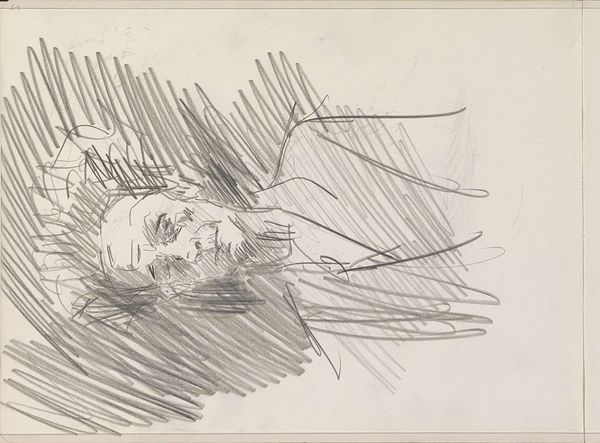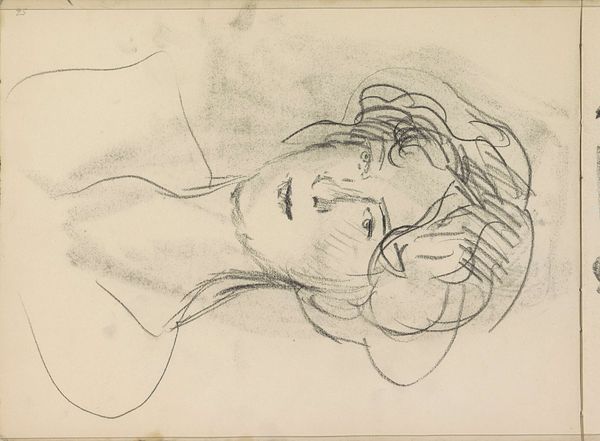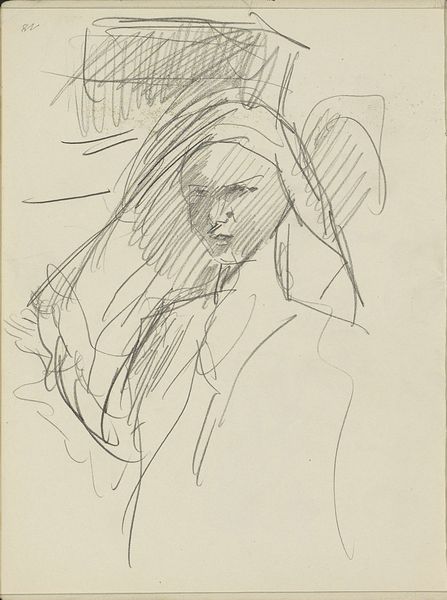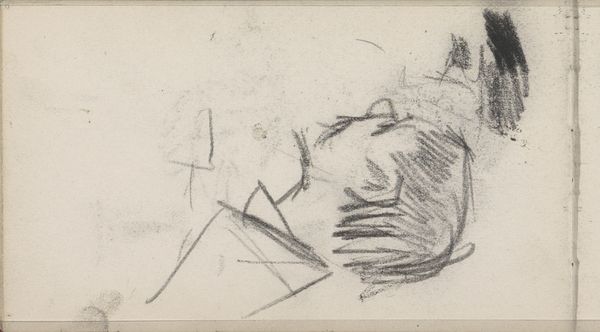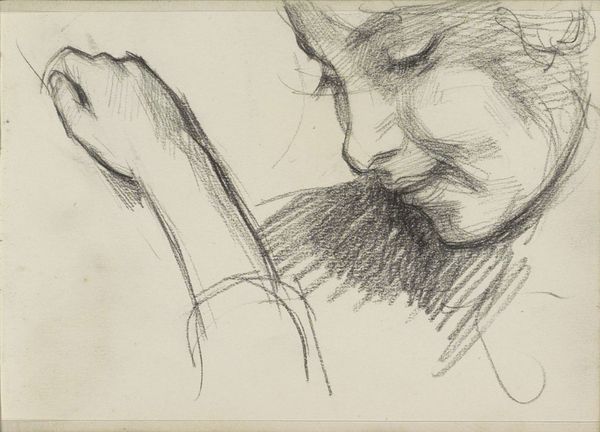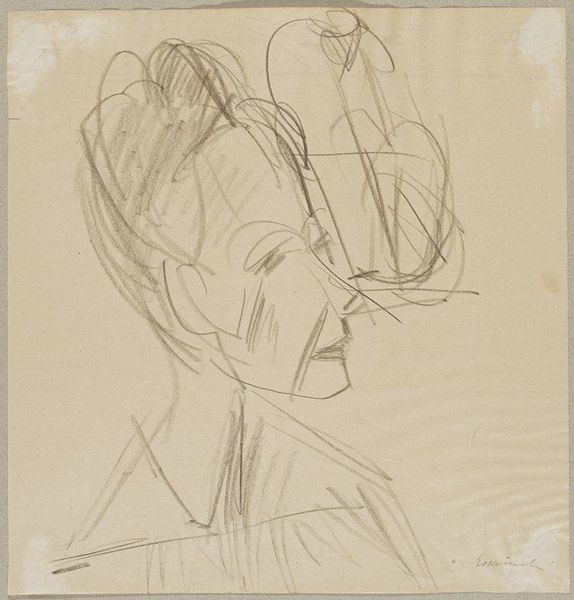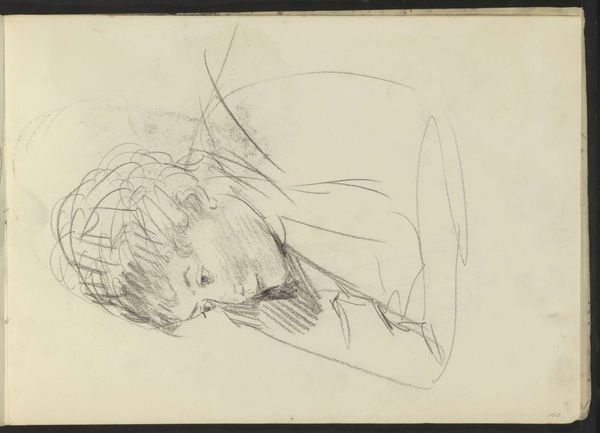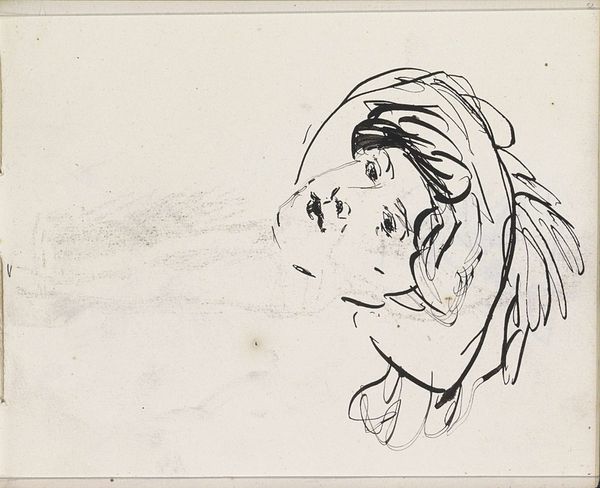
Copyright: Rijks Museum: Open Domain
Editor: This is "Slapende Vrouw," or "Sleeping Woman," by George Hendrik Breitner, made sometime between 1885 and 1898. It's a pencil drawing. It feels very intimate, like a glimpse into a private moment. What do you see in this sketch? Curator: I see the universal symbol of respite, that surrender we all give to sleep. Note how Breitner captures not just physical relaxation but a kind of mental unguardedness. The hand cradling the face isn't just support, but a barrier, a seeking of comfort, or perhaps a shield against the world. Doesn’t this simple image remind you of countless depictions of sorrow or deep thought throughout art history? Editor: Yes, that’s true! It makes me think of classical sculptures of melancholic figures. Is that hand a deliberate echo? Curator: Perhaps not deliberate, but resonant. These visual cues become embedded in our cultural memory. Think of the pose, the downturned face; these evoke similar feelings across centuries. Even the rough, unfinished nature of the sketch adds to the vulnerability. It's as if Breitner captured a raw emotion before it could be concealed. Editor: That's fascinating. So, it’s not just a simple sketch of someone sleeping. It carries all these historical and emotional layers. Curator: Precisely! It reveals how images build on each other, creating a visual language understood, consciously or not, across time and cultures. Editor: Wow, I will definitely look at sketches differently now! Thanks! Curator: And I am reminded of the power of simplicity to evoke profound and enduring connections.
Comments
No comments
Be the first to comment and join the conversation on the ultimate creative platform.


